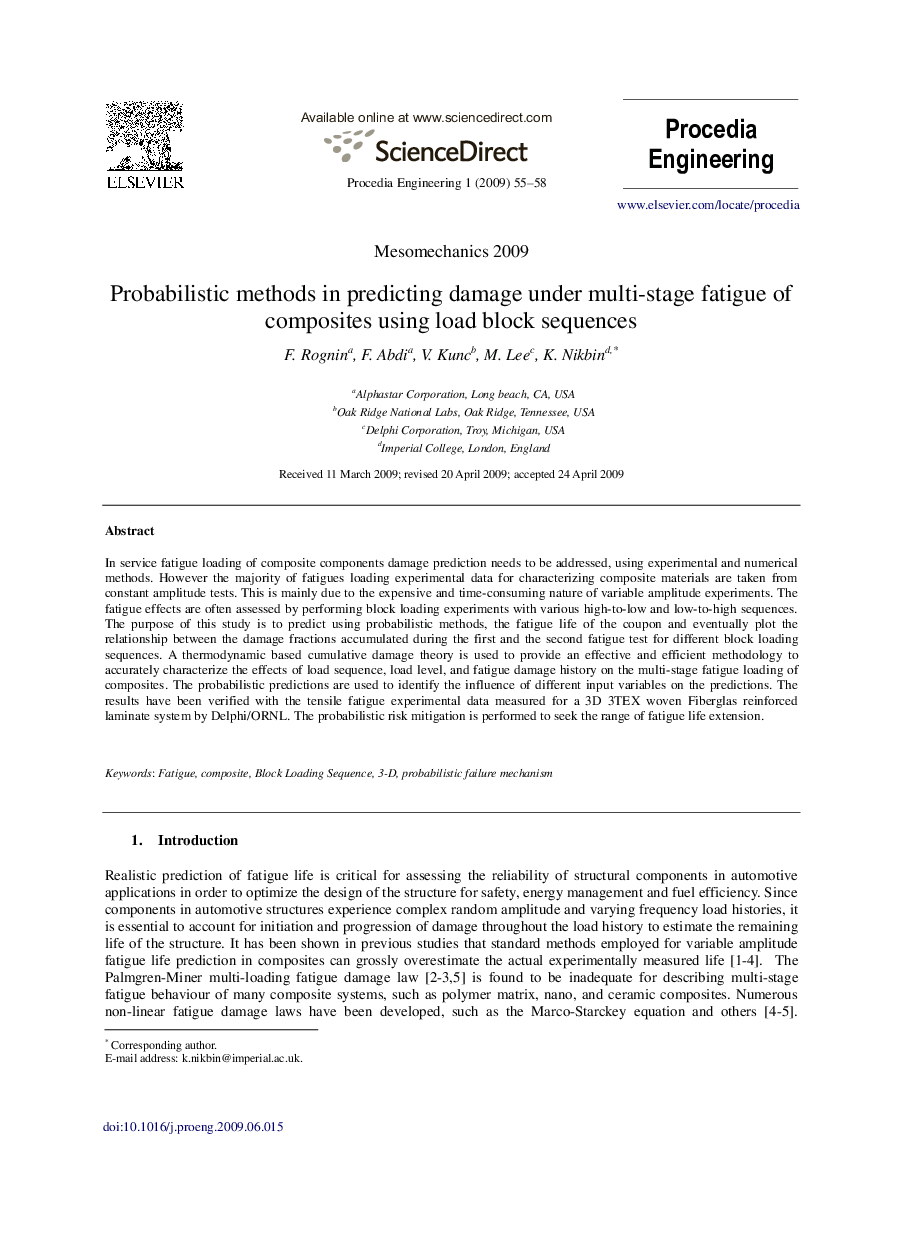| Article ID | Journal | Published Year | Pages | File Type |
|---|---|---|---|---|
| 864545 | Procedia Engineering | 2009 | 4 Pages |
In service fatigue loading of composite components damage prediction needs to be addressed, using experimental and numerical methods. However the majority of fatigues loading experimental data for characterizing composite materials are taken from constant amplitude tests. This is mainly due to the expensive and time-consuming nature of variable amplitude experiments. The fatigue effects are often assessed by performing block loading experiments with various high-to-low and low-to-high sequences. The purpose of this study is to predict using probabilistic methods, the fatigue life of the coupon and eventually plot the relationship between the damage fractions accumulated during the first and the second fatigue test for different block loading sequences. A thermodynamic based cumulative damage theory is used to provide an effective and efficient methodology to accurately characterize the effects of load sequence, load level, and fatigue damage history on the multi-stage fatigue loading of composites. The probabilistic predictions are used to identify the influence of different input variables on the predictions. The results have been verified with the tensile fatigue experimental data measured for a 3D 3TEX woven Fiberglas reinforced laminate system by Delphi/ORNL. The probabilistic risk mitigation is performed to seek the range of fatigue life extension.
